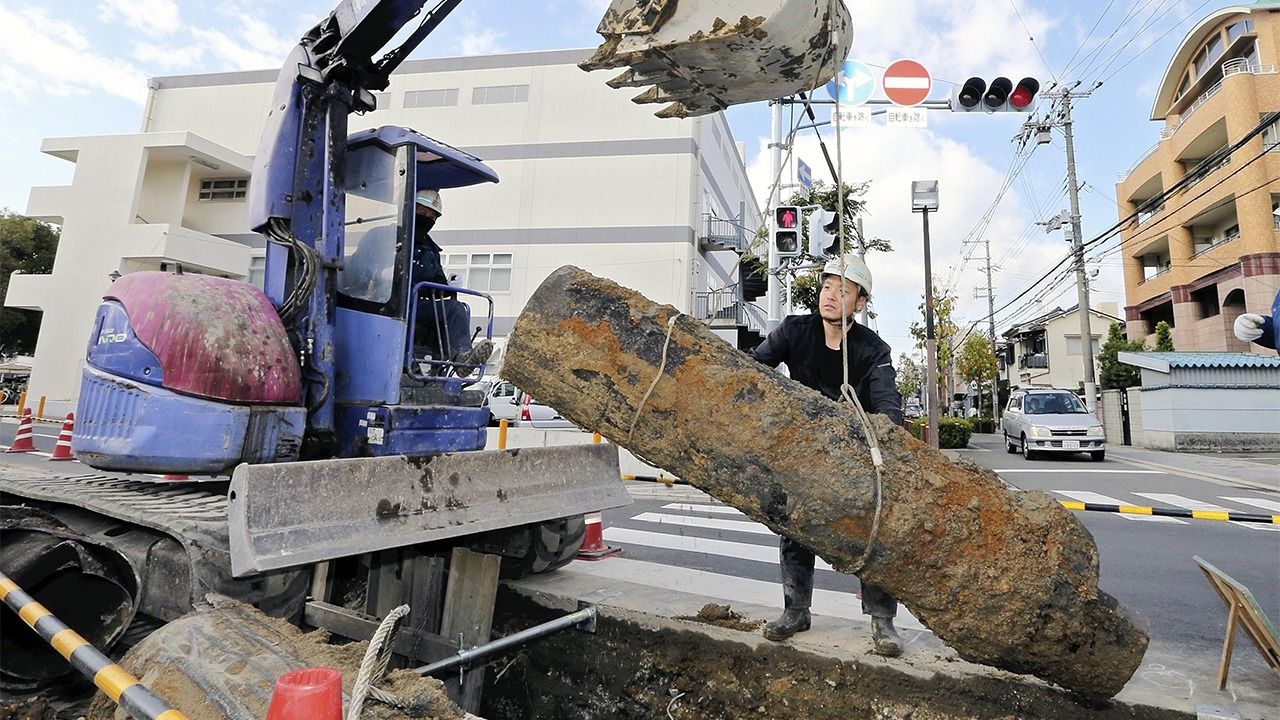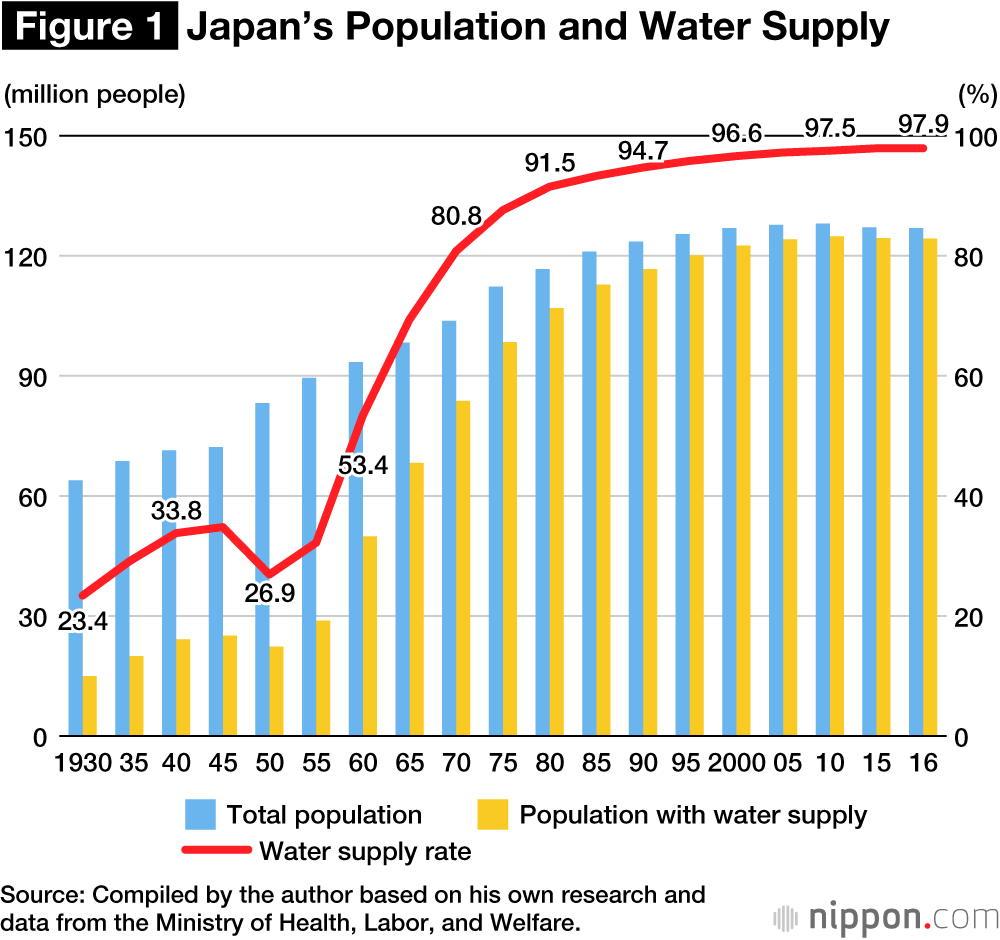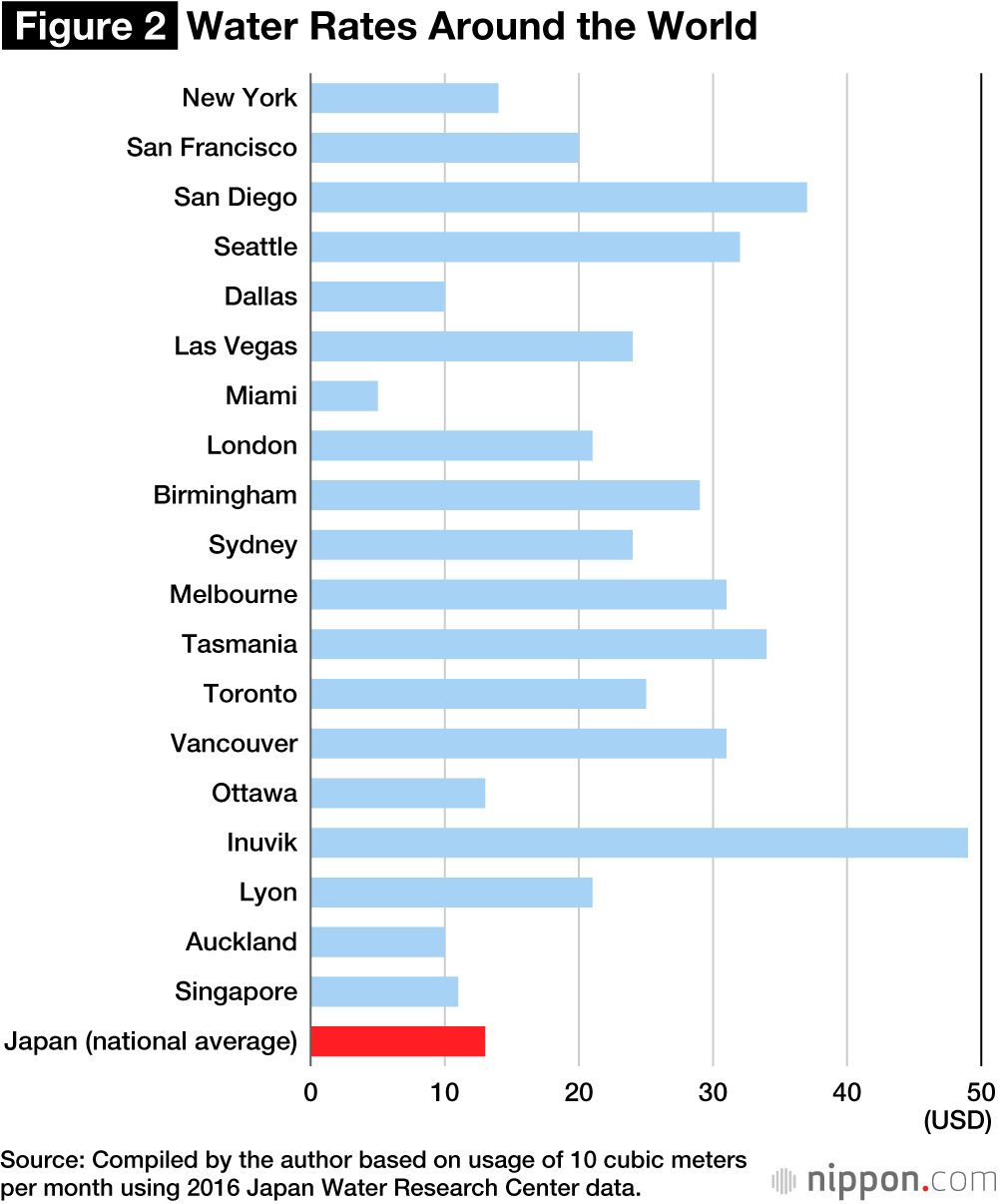Japan’s Water Utilities Threatened by a Declining Population
Published on by Water Network Research, Official research team of The Water Network in Government

Japan has long taken pride in having a nearly universal supply of safe and inexpensive tap water, but this is starting to deteriorate into a myth as a declining population and aging infrastructure take their toll.
Universal Access to Piped Water
Japan’s first modern high-pressure piped water system was completed in 1887 in Yokohama. At that time, many cities, particularly port cities, were plagued by water-borne infectious diseases. The congestion of wooden buildings in urban areas also meant that fires were quick to spread one they broke out, with devastating consequences. In an effort to secure public hygiene and prevent fires, the Japanese government set about building water supply systems throughout the country that would be operated and maintained by the municipal authorities.
There was a surge in the spread of piped water systems from the late 1950s into the 1980s during Japan’s era of rapid economic growth. As shown in Figure 1, the tap water supply rate of 26.9% in 1950 had gone up to more than 90% by 1980, and in 2016 was 97.6%.
Japan’s Tap Water: Tasty and Cheap
As Japan’s economic development progressed, industrial effluents and pollutants increased, causing numerous environmental problems. Water quality at the source deteriorated to such an extent that tap water took on a foul odor. The problem became so prevalent that the Ministry of Health and Welfare (now the Ministry of Health, Labor, and Welfare) was compelled to act. Under a slogan calling for “delicious water supply,” the ministry implemented advanced water treatment technology which eventually solved the problem. Today, Japan’s tap water is not only of the highest quality, it is also provided for very low fees compared to other countries. Figure 2 shows the average water rates charged to households in a number of the world’s major cities. As you can see, Japanese water rates are significantly low.
A Crisis Situation
Japan’s water utility companies were able to supply the needs of a burgeoning economy and growing population with clean water meeting the most stringent standards in the world, but upon entering the twenty-first century, their job has become increasingly difficult. Figure 3 shows the fiscal 2016 cost recovery rates of Japanese water utilities providing tap water. As you can see, the rate is less than 100% for around a third (414) of the companies.
According to a March 2018 report predicting future water rates, compiled by Ernst and Young Shinnihon LLC and the Secretariat of the Water Security Council of Japan, roughly 90% of Japan’s water utility companies well be forced to raise their fees by an average of 36% by the year 2040.
In addition to this, a Ministry of Health survey indicates that as of the end of fiscal 2016, the annual replacement rate of old, corroded pipes was only 0.75%, far less than the essential rate, deemed to be 1.14%. Likewise, the spate of large-scale earthquakes with shaking reaching level 7 on the Japanese intensity scale in recent years has caused water stoppage in more than 1 million households, extending over several months in some cases.
Media
Taxonomy
- Infrastructure
- Infrastructure Management

